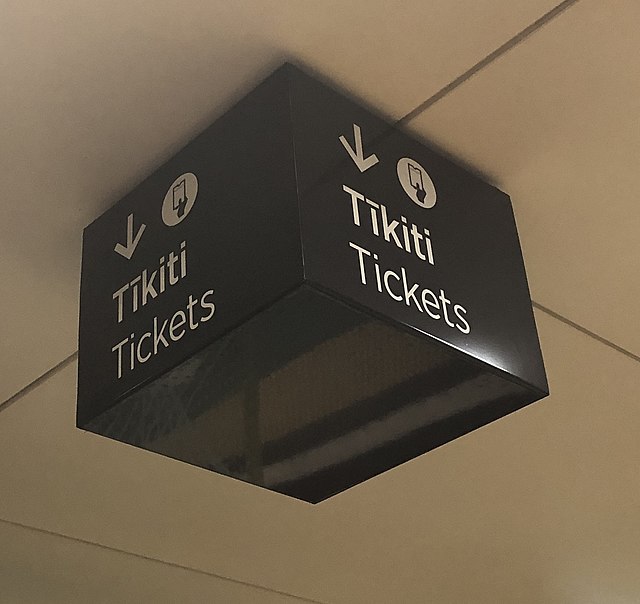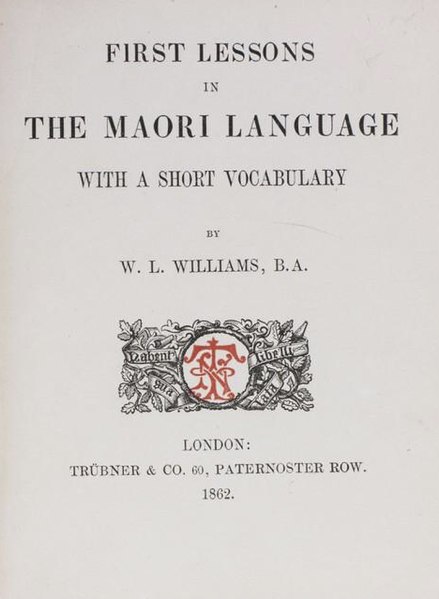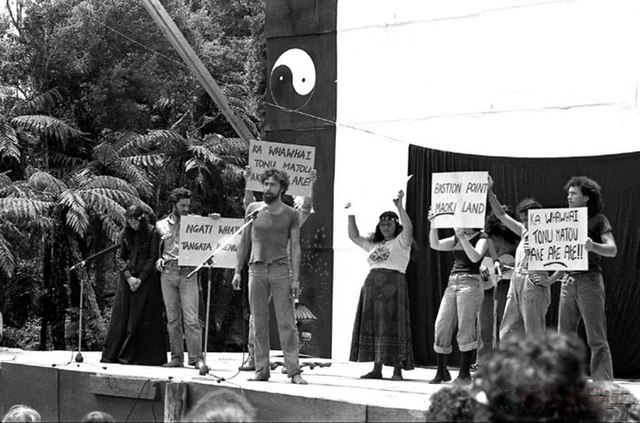A marae, malaʻe, meʻae or malae is a communal or sacred place that serves religious and social purposes in Polynesian societies. In all these languages, the term also means cleared and free of weeds or trees. Marae generally consist of an area of cleared land roughly rectangular, bordered with stones or wooden posts perhaps with paepae (terraces) which were traditionally used for ceremonial purposes; and in some cases, such as Easter Island, a central stone ahu or a'u is placed. In the Easter Island Rapa Nui culture, the term ahu or a'u has become a synonym for the whole marae complex.
Taputapuātea, an ancient marae constructed of stone on Ra'iātea in the Society Islands of French Polynesia, restored in 1994.
A marae at Kaitotehe, near Taupiri mountain, Waikato district, 1844. It was associated with Pōtatau Te Wherowhero, a chief who became the first Māori king.
Waipapa marae, University of Auckland, New Zealand. The grassed area in front of the meeting house is the marae ātea.
Arai-te-Tonga marae, Rarotonga.
Māori, or te reo Māori, commonly shortened to te reo, is an Eastern Polynesian language and the language of the Māori people, the indigenous population of mainland New Zealand. A member of the Austronesian language family, it is related to Cook Islands Māori, Tuamotuan, and Tahitian. The Maori Language Act 1987 gave the language recognition as one of New Zealand's official languages. There are regional dialects.
Prior to contact with Europeans, Māori lacked a written language or script. Written Māori now uses the Latin script, which was adopted and the spelling standardised by Northern Māori in collaboration with English Protestant clergy in the 19th century.
Bilingual sign at railway station in Auckland, New Zealand
"First Lessons in the Maori Language", 1862, by W. L. Williams, third Bishop of Waiapu
He Taonga Te Reo – a celebration of Maori Language poster, Wellington Public Library (1995)
Bastion Point land rights activists with Māori-language signs








